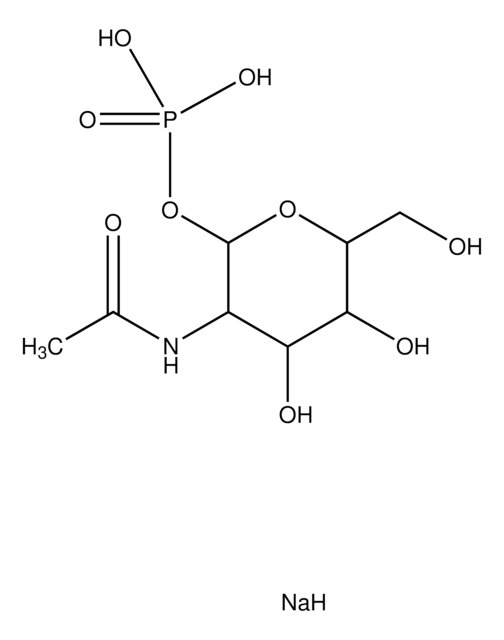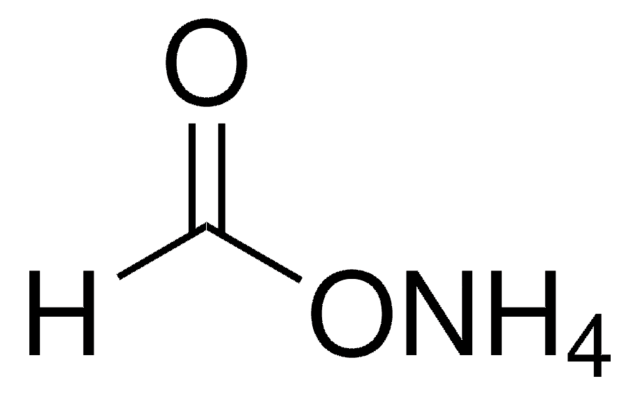A6141
Ammonium bicarbonate
ReagentPlus®, ≥99.0%
Synonym(s):
Ammonium hydrogen carbonate
About This Item
Recommended Products
vapor density
2.7 (vs air)
Quality Level
vapor pressure
513 hPa ( 50 °C)
67.1 hPa ( 20 °C)
product line
ReagentPlus®
Assay
≥99.0%
form
powder or crystals
pH
7-8.5 (25 °C, 79.1 g/L)
SMILES string
N.OC(O)=O
InChI
1S/CH2O3.H3N/c2-1(3)4;/h(H2,2,3,4);1H3
InChI key
ATRRKUHOCOJYRX-UHFFFAOYSA-N
Looking for similar products? Visit Product Comparison Guide
General description
Application
- To derivatize histone proteins from human monocyte-derived macrophages (MDM) by propionylation.
- Destaining of silver-stained proteins in polyacrylamide gel bands during the peptide mass profiling using a mass spectrometer.
- Digestion of proteins isolated from Xenopus egg extracts in coomassie blue-stained gel bands during the analysis of microtubule-binding proteins.
Legal Information
Signal Word
Warning
Hazard Statements
Precautionary Statements
Hazard Classifications
Acute Tox. 4 Oral
Storage Class Code
13 - Non Combustible Solids
WGK
WGK 1
Certificates of Analysis (COA)
Search for Certificates of Analysis (COA) by entering the products Lot/Batch Number. Lot and Batch Numbers can be found on a product’s label following the words ‘Lot’ or ‘Batch’.
Already Own This Product?
Find documentation for the products that you have recently purchased in the Document Library.
Customers Also Viewed
Our team of scientists has experience in all areas of research including Life Science, Material Science, Chemical Synthesis, Chromatography, Analytical and many others.
Contact Technical Service





